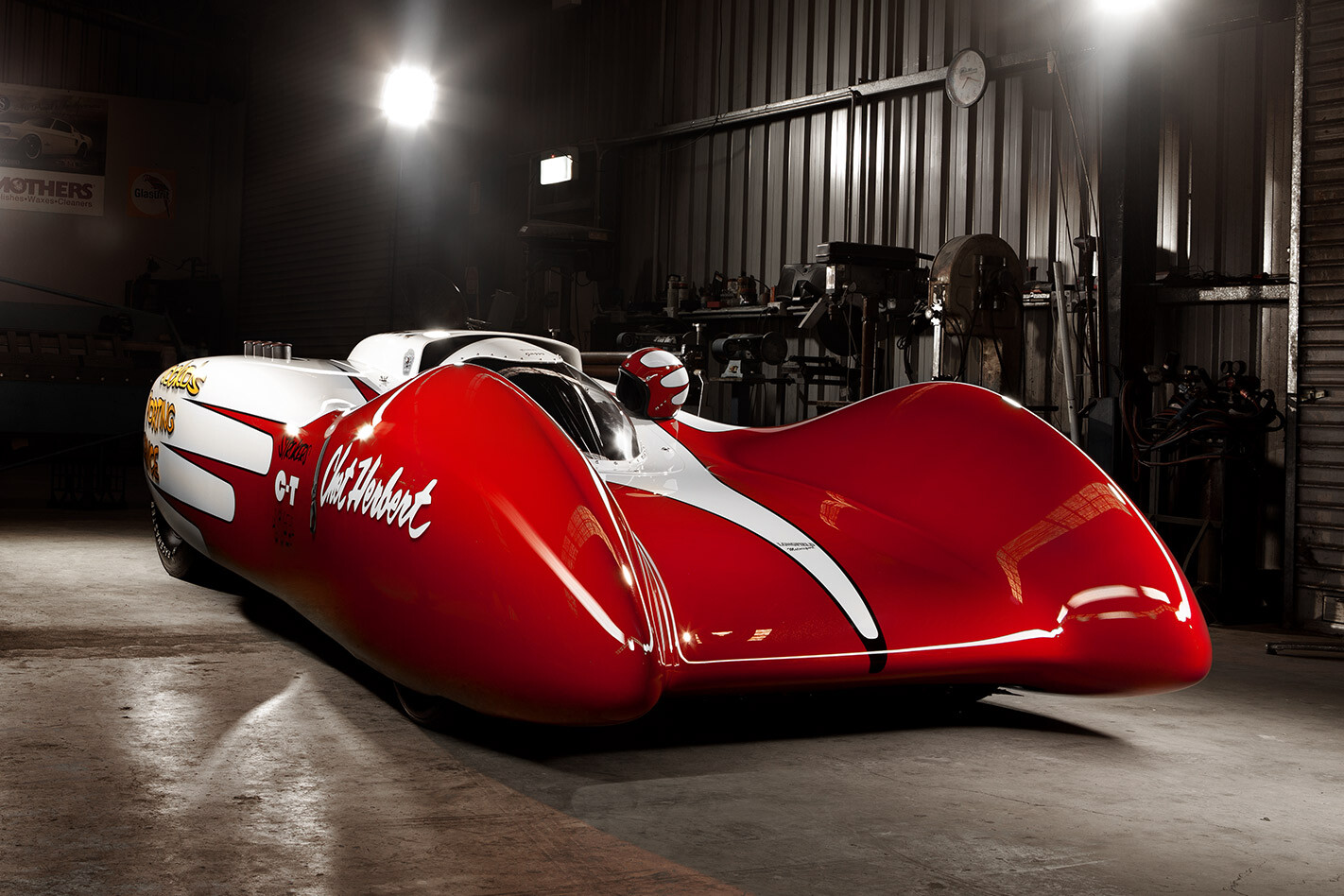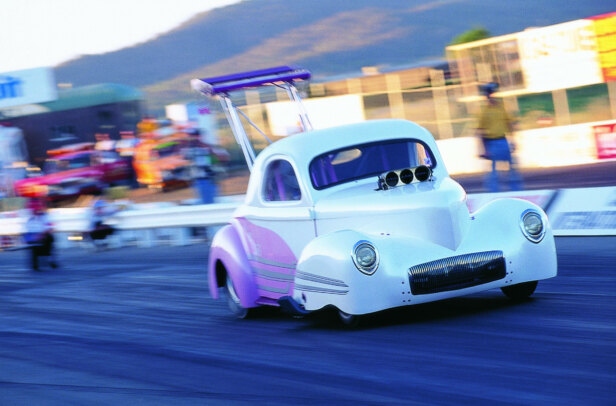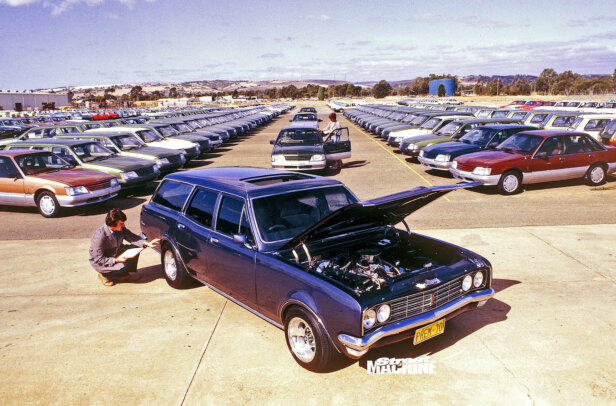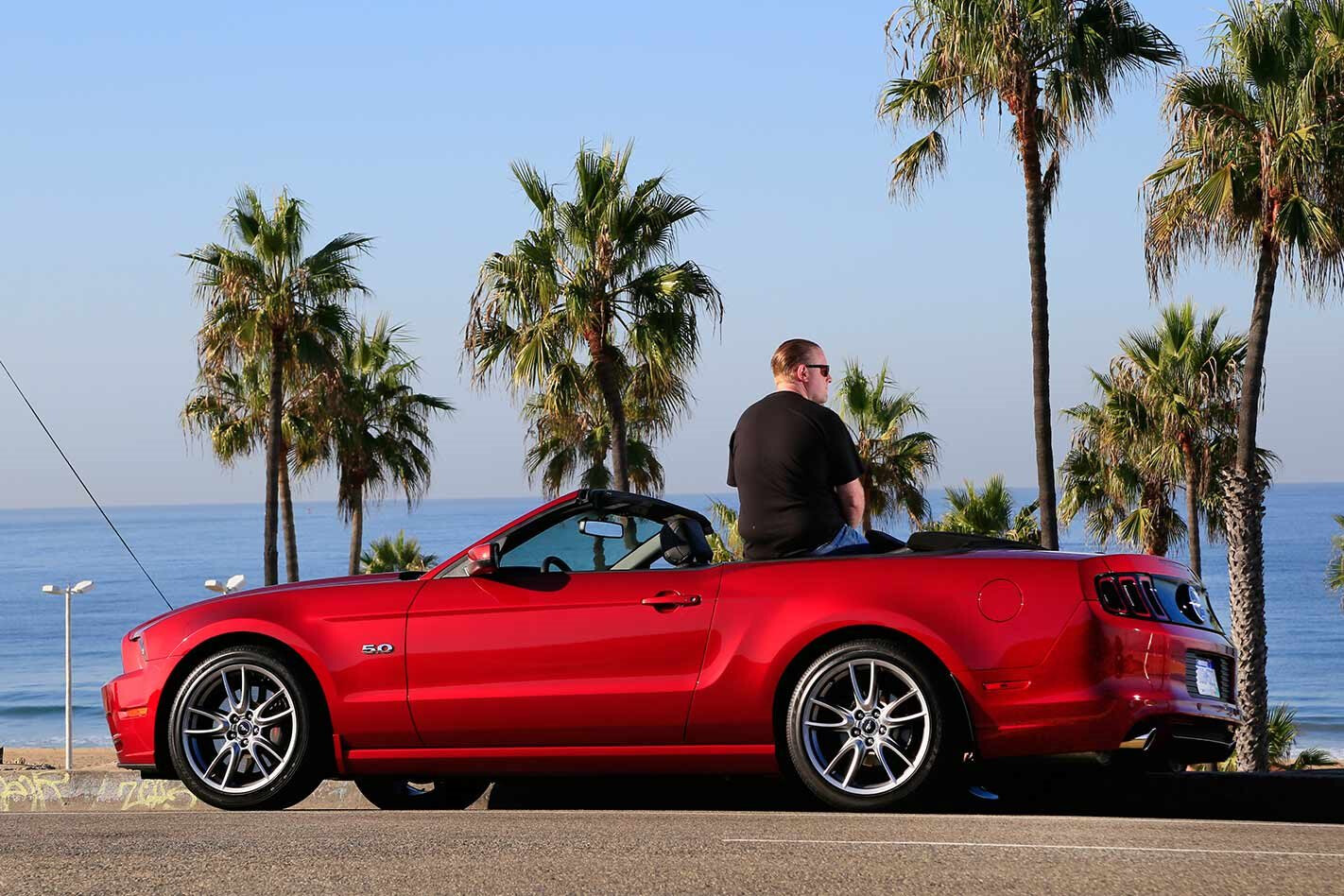NORM Longfield said he’d fix it and don’t we love him for it. The last time this car graced our pages was the 2009 Street Machine Hot Rod Annual but those pics were 10 years old and taken not long before Norm put the Jocko Liner on its lid while racing an aeroplane — and kicking its arse — at Cowra Airstrip.
First published in the February 2013 issue of Street Machine. Photos: Easton Chang
Designed in the late 50s by Robert ‘Jocko’ Johnson, the car was from another planet compared to the front-engined dragsters that were racing at the time. With Jim ‘Jazzy’ Nelson behind the wheel, Jocko’s first streamliner smashed the outright record quarter-mile record in 1958 with a 8.35@178mph pass.
Only five more were ever built, including an Allison V12-powered monster that ran 193mph, and Don Garlits’s Wynns-Liner.
Jocko earned his nickname (for reasons we won’t go into here) while working at the famed Barris Kustom Shop. At that time, it happened that Chet Herbert of Herbert Racing Cams needed a new streamlined body for his salt lake racer, Beast IV, so while Sam Barris beat the slippery body out of aluminium, Jocko looked on and was spellbound.
A few years later, Jocko had opened his own head-porting business and built his own streamliner, based on what he had learnt at Barris and what he felt would work aerodynamically. There was a slight difference between Jocko’s body and the record-setting Herbert car, which ran almost 250mph in 1954. Chet Herbert had employed Rod Schapel to design the body, and being a mechanical engineer who worked in the aeronautical industry he did it using the laws of physics, a slide rule and the wind tunnel at Cal Tech.
Looking more like a fighter plane than a drag car of the era, you have to wonder how many people thought aliens had landed when they first saw this thing. Remember, it was 1958 when it first hit the track!
“Jocko’s car cuts the air at about 10 and a half inches at the front but it’s got a full belly pan that’s only three inches off the ground,” Norm says. “At around about the 170mph bracket, that 10 and a half inches goes underneath the car — and when that gets packed into three inches, the air pressure underneath starts lifting the car.”
In Jocko’s defence, Mercedes Benz suffered a similar problem at Le Mans some 40 years later, when Mark Webber ended up — literally — piloting the car through a double backflip with a half twist. “Even with all their computers and their designers, they still managed to get it wrong,” Norm notes drily.
While Jocko’s idea of a streamlined dragster never caught on, the concept of putting the engine behind the driver certainly did — albeit only when Don Garlits turned his hand to the idea.
Aluminium block is a reusable oil filter, while the four tubes help drain excess nitro from the zoomies. Apart from the risk of the fuel igniting on the next start up, the nitro is really bad for paint
Regardless of the Jocko car’s failings, when something so beautiful and historically important comes up for sale, you can’t really knock it back.
“I’m a hot rodder who’s into drag racing. I went to Castlereagh when I was 16, before I had a licence, and I knew the basic history of the car. When I saw it advertised, I couldn’t pass it up. At that stage I didn’t know much about them, didn’t know how many were around, but I could tell it was a really rare car.
“I bought it sight unseen from Michigan. The owner quickly sent me out some photographs, I had a look and thought: ‘Yep, that’s what I think it is.’ When it got here, it needed a lot more work than I thought it would, but that’s life. The person sending the photographs only ever sends you pictures of the good bits, not the bad bits!”
Norm got the car up to scratch, including a rollcage that would pass an ANDRA tech inspection, and filled the engine bay with a JP-1 Hemi, BAE heads and an 8/71. Body and paint were done by Greg ‘Ziggy’ Sadler. The result was stunning and would have been welcome in any auto museum — but Norm builds his cars to drive, regardless of how crazy they are, and when the car was crashed, it was only a matter of time before it was restored.
Unpolished magnesium Halibrands and M&H Racemasters on all four corners. No need to polish the rims; you can’t see them anyway!
The current set-up is a bit more in keeping with the car’s late-50s origins, both in terms of paint and the injection system. And, true to his word in ’09, Norm has put it on nitro and is now using it as a cackle car, with its debut at the 2012 Rocket Open Day.
Like every car in the Longfield stable (which includes his scene-stealing ’23 T pickup, rear-engined ’28 roadster pickup and a tube-chassis Pro Street Willys), the details and finish are impeccable, from the gold anodised aluminium in the cockpit to the flawlessly applied paint and signage. As with the previous rebuild, Norm had Greg at Ziggy’s Hot Rods apply the paint.
“All the old drag cars were rough — make ’em light, make ’em quick, and that was it. I started going that way but I just couldn’t. You end up doing it better than they ever were before,” Norm says.
Even the simplest task of building a race car — putting the speed parts stickers on — was taken to a new level by Ziggy.
The new paint scheme replicates the original car that Jocko and Jim ‘Jazzy’ Nelson campaigned. Stunning airbrush work extends to the speed parts stickers. Yet more amazing work from Ziggy’s Hot Rods
“The stickers on it aren’t stickers; they’ve all been airbrushed. He’s done an amazing job with the paint. It’s over the top, really. I kept on telling him: ‘Don’t worry, it’s a race car.’ He said: ‘Are you going to race it?’ I said: ‘No, I’m not going to race it ever again but it’s still a race car.’ He can’t help himself. Everything comes out of the shop A1.”
When it comes to the actual driving experience, Norm says: “This is the best-looking car I’ve ever owned but it’s the biggest bitch of a thing to drive.”
The very narrow rear track combined with the fact the front wheels aren’t on the ground at the business end of the dragstrip makes for an interesting ride but one of the most difficult things to get used to was the view out of the cockpit.
“When I sit in it and lay back into the seat, all I see is the road. So at speed, you can start to wander off the track if you’re not careful — you lose track of where you are. You might be looking down the end of the track but the car might start drifting off to the left and you don’t notice it. What it needs is a Mercedes badge at the very leading edge, with the crosshairs so that you know where you’re heading.”
It’s a little bit sad that we won’t ever see the Jocko Liner thunder down the quarter-mile again but Norm’s already crashed it once and he doesn’t want to do it again. With only six ever built and just three remaining — the other two in the US — Norm’s is the only one in running order and he’d like to keep it that way.
NORM & RHONDA LONGFIELD
JOCKO STREAMLINER
Colour: Glasurit white with red scallops
ENGINE
Type: Cast iron Hemi
Inlet: Cragar
Injection: Hilborn four-port
Blower: Magnesium 8/71
Heads: Waterman cast alloy
Valves: Manley
Cam: Crane flat tappet
Pistons: Forged True
Crank: Velasco
Conrods: M/T
Exhaust: Zoomie
Ignition: Mallory magneto
TRANS
Box: Lenco two-speed with reverser
Bellhousing: Steel McKinney can
Clutch: Hayes dump clutch twin-plate
Diff: Ford nine-inch
SUSPENSION & BRAKES
Front end: Solid mounted
Steering: Rack and pinion
Brakes: Ventilated discs (rear only)
WHEELS & TYRES
Wheels: Magnesium Halibrand 15×3½ (f), reversed 16×11 (r)
Tyres: M&H Racemaster 3½/22-15 (f), 12.00-16 (r)
THANKS
Rod Walls, Andy Gabriel, Brad Willard, Richard Bottica, Johnny Williams, Brenton Holmes, Greg ‘Ziggy’ Sadler of Ziggy’s Hot Rods for an absolute great body repair and repaint




Comments